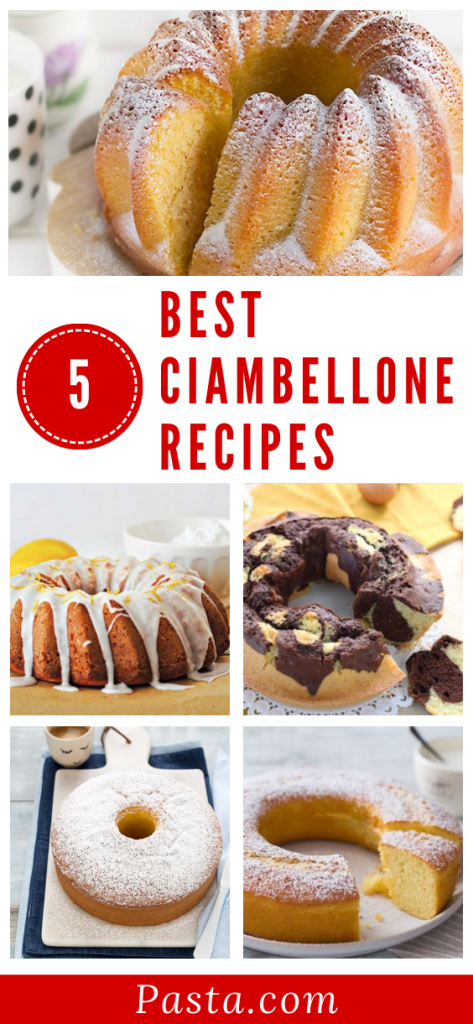What is Ciambellone?
Ciambellone (also referred to as Ciambella) is a delicious Italian tea cake with a texture that includes both the bounciness of a spongecake, with the perfect crust of freshly baked bread. The flavors are usually simple and sweet which make it a perfect cake for breakfast. Try it alongside some berries or fruit, or even with some coffee.
A lot of the variations will include citrus (such as lemon or orange), chocolate, or sometimes yogurt. While there are so many flavor variations (which can depend on the region of Italy the recipe is from), this cake is almost always in a ring shape. It’s kind of like an Italian version of the bundt cake. With prep time being very minimal, it’s no wonder we love making these cakes from scratch. Here are just a few of our favorite recipes!
1. Ciambellone Classico (Traditional)
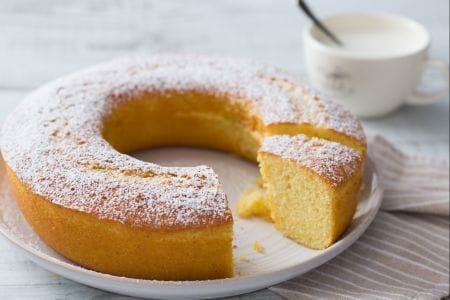
If you’re looking for a good traditional style recipe, definitely check this one out. You might even have most of these ingredients already in your pantry. Plus it’s a great base version if you did want to add your own fruit or flavorings to the mix. We also like that it recommends lemon zest, which gives just a hint of the citrus flavor without being too overpowering with lemons. And lastly, it’s topped off with powdered sugar which is our favorite trick for making desserts look extra fancy especially for when we’re entertaining.
If you’ve never made or had ciambella before this is a great one to start with, then you can tweak it to your own preferences. This recipe even recommends testing out adding vanilla bean, poppy seeds, raisins, or even candied fruit. The possibilities are endless!
Get the full recipe and directions from Giallo Zafferano
2. Ciambellone Soffice (Soft and Tall)
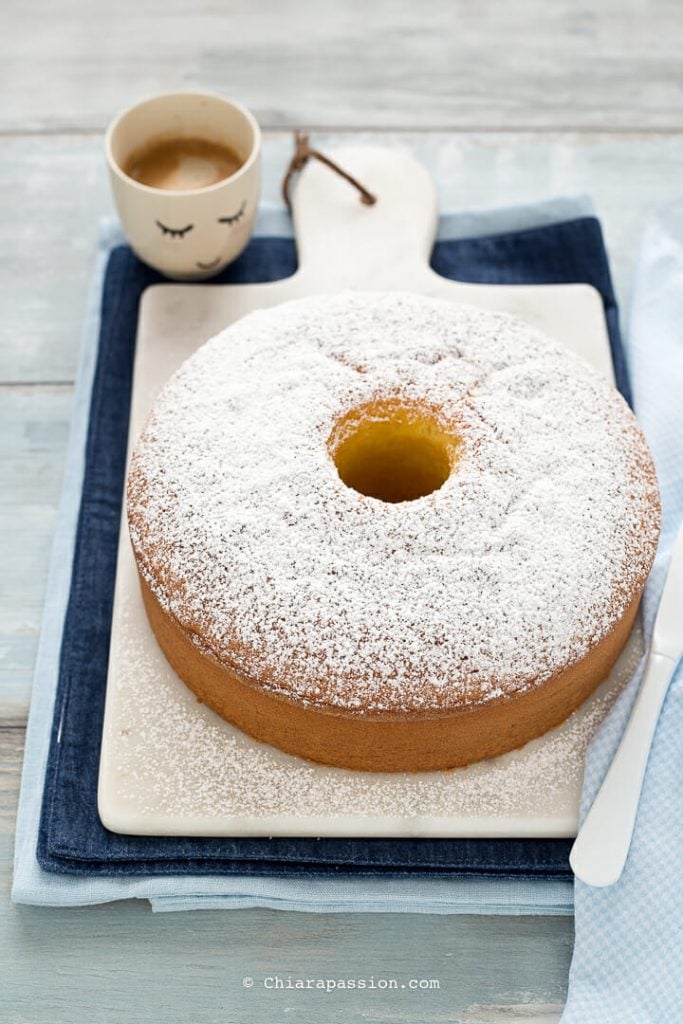
This version of the cake has a lot of the same ingredients as the classic version, but by making a couple of tweaks you can achieve a very tall and cloud-like texture. (This is where it gets its nickname ’soft and tall’). It is very comparable to the process of making a chiffon cake, so if you’ve done a chiffon cake before you’ll already know a lot of the techniques needed when handling whipped egg whites. And if not, no worries – there are only a couple of things needed to be done:
Use Only Room Temperature Ingredients
While mixing all of the components only takes about 15 minutes, using room temperature ingredients typically means planning in advance so that you know to take the eggs and milk out of the fridge for at least an hour or 2 prior. So please consider this extra time needed in your planning.
Beating Your Egg Whites Stiff
This means beating them to the point that stiff peaks form (meaning, when you pull the mixer out, a little peak forms and can stand straight up). While this part may be a challenge to identify at first, it will help you achieve the fluffiest cake possible. If you need assistance in being able to distinguish the difference between soft peaks, firm peaks, stiff peaks, and over-beaten, this video does a great job in assisting with this.
Folding the Ingredients In
Once your egg whites are stiff and cloud-like, you will want to maintain that fluffy texture by folding the rest of the ingredients in. Do not use a mixer of any sort (electric or manual), but instead gently fold them into the egg whites by using a spatula and turning the bowl after each fold (so you don’t over-mix in one area).
Use a High-Wall Cake Mold
And lastly, you’ll want to use a cake mold that has really high walls. This will help you to achieve a really high cake.
Get the full recipe and directions from Chiarapassion
3. Ciambella Bicolore (2-Colored)
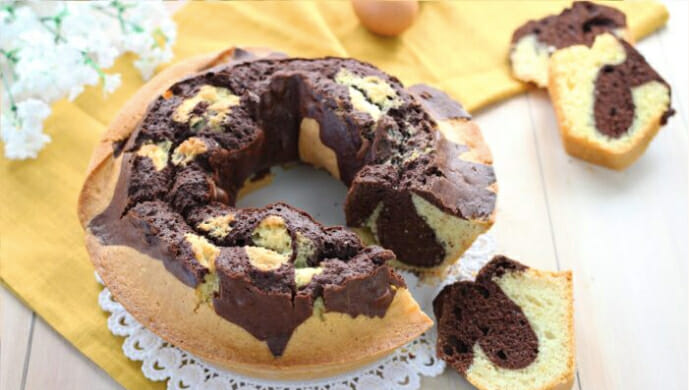
If you thought this cake couldn’t get any better, wait until you try the 2-colored (bicolore) version. This technique is achieved by pouring in half of the plain batter into the mold. Coloring the remaining batter in the bowl, and then pouring the newly colored batter into the rest of the mold. Most variations of this use chocolate or cocoa for a ‘black and white’ effect, but this doesn’t mean you only have to use chocolate. You could also use food coloring if you wanted the cake to match with a party theme, or you could even blend in some strawberries for a naturally colored pink batter.
We’ve also seen a really cool method of getting the 2 colors to have a swirl effect. You can achieve this by pouring in half of the plain batter into the mold. Coloring the remaining batter in the bowl, and then pouring a tiny amount of the colored batter around the mold. Take a spoon and zig-zag it once through the mold to get the colors to mix a bit, but not too much that they blend together, and then pour the remaining amount of the newly colored batter into the rest of the mold. It’s just so pretty, and a lot of fun to do!
Get the full recipe and directions from Fatto in Casa da Benedetta.
4. Ciambellone Allo Yogurt
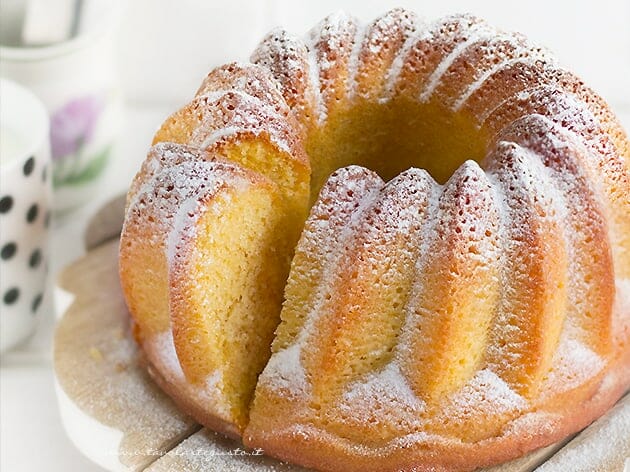
Adding yogurt to a cake recipe introduces a moisture-rich, melt-in-your-mouth texture. The challenge of course is in making sure that the cake doesn’t deflate too much after being removed from the oven. Luckily for you, this recipe will give you the perfect yogurt cake every time (the trick is to make sure that the yogurt is at room-temperature).
I also love that this recipe recommends an apricot-flavored yogurt. I love how apricot tastes in desserts, and am often surprised at how very little it’s used. So I’m glad that it’s recommended here. A couple of other things to note: this is a great recipe for people that don’t want to use butter in their baking. And also, the use of yogurt help keeps the moisture in the cake for up to 4 days. But it will most likely be completely eaten by then.
Get the full recipe and directions from Tavolartegust
5. Ciambella Al Limone e Marscapone (Lemon and Marscapone)

For those who love lemon desserts, this is a great ciambellone recipe to try. It has more lemon flavoring than the classic version since it utilizes both lemon juice and lemon zest. And the marscapone adds a nice level of sweetness and moisture. Similar to using the yogurt in the recipe above, we recommend the marscapone to be room temperature as well.
As an added bonus, this recipe can swap out regular flour for gluten-free flour. So if you’re needing a gluten-free cake option this is definitely one to check out.
Get the full recipe and directions from Free Senza Glutine
This concludes our roundup of our favorite ciambellone recipes. Which ones did you like, or think you would try? Honestly, this cake is so versatile and simple, that it will pretty much go with anything. You really can’t go wrong with which version you try. If you liked this post, we also recommend checking out our favorite Ciambelle Recipes post.
